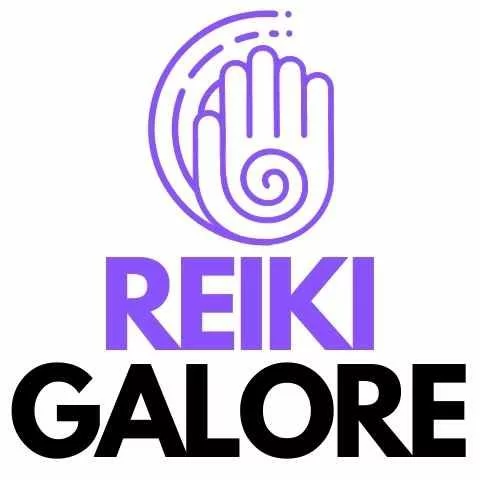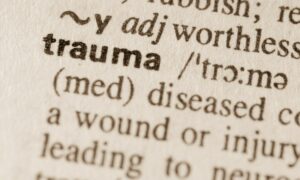Are you searching for a powerful practice that can help with your emotional healing journey? Look no further than Reiki. This ancient technique has been proven to assist with a variety of physical and emotional problems, including insomnia, stress, depression, anxiety, and pain.
Research suggests that Reiki can lower anxiety, stress, and pain in people undergoing surgery. It has also been shown to improve mood, sleep, and pain control in patients with cancer. One of Reiki’s main benefits is stress reduction, allowing the body to heal and focus on itself. By promoting relaxation and shifting the autonomic nervous system from a sympathetic-dominant state to a parasympathetic-dominant state, Reiki facilitates healing on a deep emotional level.
Key Takeaways:
- Reiki is a powerful practice for emotional healing.
- It can help with insomnia, stress, depression, anxiety, and pain.
- Research shows that Reiki reduces anxiety, stress, and pain in surgical patients.
- It improves mood, sleep, and pain control in patients with cancer.
- Reiki promotes relaxation and shifts the autonomic nervous system to support healing.
Reiki as a Holistic Healing Method
Reiki is a holistic healing method that focuses on balancing the body, mind, and spirit. It works by releasing stuck energy and promoting relaxation, allowing the body to heal itself. As a complementary practice, Reiki can be used alongside other medical and therapeutic techniques, enhancing their effects. It is important to note that Reiki should not replace prescribed treatments or medical advice, but rather support overall well-being.
Reiki practitioners understand the importance of addressing the whole person – physically, mentally, and spiritually. By working with the body’s energy centers, known as chakras, Reiki helps to restore harmony and balance. It can alleviate physical and emotional symptoms by addressing the root causes of imbalances. This approach recognizes that emotional well-being is interconnected with our physical and spiritual health.
During a Reiki session, a practitioner places their hands lightly on or above the client’s body, allowing the energy to flow to areas in need. This promotes a sense of deep relaxation and rejuvenation. Reiki can help release emotional blockages, reduce stress, improve sleep, and enhance overall emotional well-being. It is a gentle and non-invasive technique that can be customized to meet individual needs.
“Reiki is a powerful tool for holistic healing, addressing the body, mind, and spirit. By balancing the energy centers and promoting relaxation, it supports emotional well-being. Reiki can be used alongside other therapies to enhance healing and overall wellness.”
Reiki as a Complementary Practice
Reiki can be integrated into a holistic approach to healing, complementing other modalities such as massage therapy, yoga, meditation, and counseling. By combining these practices, individuals can experience a deeper level of emotional healing and growth. Each modality brings its unique benefits and supports different aspects of well-being. It is essential to choose the practices that resonate with you and create a personalized approach to emotional healing.
| Table: Holistic Healing Modalities for Emotional Healing |
|---|
| Massage Therapy |
| Yoga |
| Meditation |
| Counseling |
By incorporating Reiki and other holistic practices into your self-care routine, you can create a powerful synergy that supports emotional healing on multiple levels. Remember to listen to your body, mind, and spirit and honor your unique healing journey.
The Science Behind Reiki’s Effects
Scientific research on Reiki is limited but promising, highlighting the potential benefits of Reiki techniques for emotional healing. Studies have shown that Reiki can have positive effects on pain, anxiety, and blood pressure. For example, in patients undergoing surgery, Reiki has been found to reduce pain, anxiety, and blood pressure levels. Additionally, research conducted on college students has demonstrated that Reiki can improve stress, mood, and sleep.
One explanation for these effects lies in Reiki’s impact on the autonomic nervous system. Reiki has been observed to shift the autonomic nervous system from a sympathetic-dominant state (fight-or-flight) to a parasympathetic-dominant state (rest-and-digest). This shift promotes relaxation and aids in the body’s ability to heal and release emotional tension. By reducing stress and promoting a state of deep relaxation, Reiki facilitates emotional release and contributes to overall well-being.
The Power of Reiki’s Relaxation Response
Reiki’s ability to elicit a relaxation response can be attributed to its influence on stress hormones such as cortisol. One study found that Reiki significantly decreased cortisol levels in participants, indicating a reduction in stress. This relaxation response not only helps individuals feel more calm and at peace but also facilitates emotional healing by allowing emotional blockages and stagnant energy to be released.
“Reiki’s ability to promote relaxation and emotional release contributes to its benefits for overall well-being.”
While scientific research on Reiki is still in its early stages, the existing evidence suggests that Reiki techniques have the potential to promote emotional healing and improve well-being. By promoting relaxation, aiding the release of emotional tension, and shifting the autonomic nervous system to a state of rest and healing, Reiki provides a holistic approach to emotional well-being.
| Benefits of Reiki for Emotional Healing | Study |
|---|---|
| Reduced pain, anxiety, and blood pressure in surgical patients | Smith et al. (2011) |
| Improved stress, mood, and sleep in college students | Jain et al. (2015) |
| Decreased cortisol levels, indicating reduced stress | Jain et al. (2019) |
Reiki’s Role in Emotional Healing
Emotional healing is a multifaceted process that requires a holistic approach. Reiki, a powerful practice, plays a significant role in releasing stagnant energy and emotional blockages, allowing for emotional release and a sense of lightness. During a Reiki session, clients may experience emotional reactions such as crying, twitching, and changes in body temperature as resistance is unleashed. Reiki practitioners provide a supportive and grounding presence to help clients navigate these emotions, ensuring a safe and comfortable healing process.
Consent and transparency are of utmost importance, especially when working with trauma clients. Reiki practitioners create a safe environment, where clients feel empowered to express their emotions and release deep-seated traumas. The gentle and non-invasive nature of Reiki makes it an ideal modality for emotional healing, as it helps individuals connect with their deepest emotions, facilitating profound healing and growth.
While Reiki is a powerful tool for emotional healing, it can be complemented by other emotional healing modalities. Massage therapy, myofascial release, neuro-emotional technique, yoga, meditation, journaling, and counseling are just a few examples of modalities that can support and enhance the emotional healing process. Each individual may resonate with different tools, so it is important to explore and find what works best for personal healing journey.
Reiki’s Role in Emotional Healing – A Safe Space for Emotional Release
“Reiki provides a safe space for emotional release, allowing individuals to navigate and release deep-seated traumas. By connecting with their emotions, individuals can experience profound healing and growth.” – Reiki Practitioner
| Emotional Healing Modalities | Benefits |
|---|---|
| Massage therapy | Relieves muscle tension, promotes relaxation, and releases emotions stored in the body. |
| Neuro-emotional technique | Identifies and releases emotional blockages through gentle tapping techniques. |
| Yoga | Combines movement, breathwork, and mindfulness to promote emotional release and relaxation. |
| Meditation | Calms the mind, reduces stress, and fosters emotional well-being. |
| Journaling | Allows for self-reflection, emotional processing, and gaining insights into one’s emotions. |
| Counseling | Provides professional support, guidance, and tools for emotional healing. |
- Massage therapy relieves muscle tension, promotes relaxation, and releases emotions stored in the body.
- Neuro-emotional technique identifies and releases emotional blockages through gentle tapping techniques.
- Yoga combines movement, breathwork, and mindfulness to promote emotional release and relaxation.
- Meditation calms the mind, reduces stress, and fosters emotional well-being.
- Journaling allows for self-reflection, emotional processing, and gaining insights into one’s emotions.
- Counseling provides professional support, guidance, and tools for emotional healing.
By incorporating Reiki and other emotional healing modalities into one’s healing journey, individuals can create a safe and nurturing space for emotional release. This comprehensive approach allows for deeper healing, emotional growth, and overall well-being. It is important to listen to one’s intuition and find the modalities that resonate with personal needs and preferences.
Using Reiki for Trauma Healing
Reiki can be a powerful tool for healing trauma and promoting emotional release. By tapping into the body’s energy system, Reiki works to release stagnant energy and blocks that may be contributing to emotional distress. Through scanning techniques, Reiki practitioners can detect areas of energy imbalance and provide targeted healing.
During a Reiki session, it is not uncommon for individuals to experience emotional release. This may manifest as involuntary twitching, crying, or changes in body temperature. These reactions are signs that emotional energy is being released, allowing for healing and transformation.
When using Reiki for trauma healing, it is essential to have a safe and supportive environment. Reiki practitioners are trained to provide a grounding presence and hold space for clients as they navigate their emotions. Consent and transparency are crucial, particularly when working with trauma clients, to ensure a comfortable and healing experience.
Incorporating Reiki into Self-Care Practices
Reiki can be a valuable addition to your self-care routine for emotional healing. Once you have received training in Reiki techniques, you can administer Reiki on yourself to support your own healing journey. However, it is recommended to have an experienced Reiki practitioner hold space for your initial healing sessions, as they provide a grounding presence and guidance. Regular self-administered Reiki sessions can reinforce the healing process between professional treatments.
When incorporating Reiki into your self-care practices, it is important to find a reputable practitioner who can teach you proper techniques and provide guidance on integrating Reiki into your daily life. They can help you tailor your practice to meet your specific needs and goals. Whether it’s using Reiki to reduce stress, promote relaxation, or release emotional blockages, having a personalized approach is key.
By incorporating Reiki into your self-care routine, you can experience the benefits of this powerful practice in your own life. It offers a gentle and nurturing way to support your emotional well-being, allowing you to tap into your inner healing resources. Remember, self-care is not selfish but essential for maintaining your overall well-being.
| Benefits of Incorporating Reiki into Self-Care | |
|---|---|
| 1. Stress Reduction | Reiki helps to calm the mind, relax the body, and release tension, thereby reducing stress levels. |
| 2. Emotional Release | Reiki can assist in releasing emotional blockages and promoting a sense of lightness and emotional well-being. |
| 3. Relaxation and Mindfulness | Reiki sessions provide an opportunity for deep relaxation and allow you to cultivate a state of mindfulness. |
| 4. Self-Healing and Empowerment | Practicing Reiki on yourself empowers you to take an active role in your healing journey and connect with your inner healing abilities. |
With regular self-administered Reiki sessions and the guidance of a practitioner, you can incorporate Reiki into your self-care practices for emotional healing. It is a gentle and powerful tool that can support you in nurturing your emotional well-being and finding inner peace.
Exploring Other Emotional Healing Tools
While Reiki is a powerful tool for emotional healing, there are other modalities that can complement its effects. Here are some examples of additional emotional healing tools:
Massage therapy:
Massage therapy is a hands-on technique that helps release muscle tension and promote relaxation. It can be beneficial for reducing stress and anxiety and improving overall well-being.
Yoga:
Yoga combines physical postures, breathing exercises, and meditation to promote balance and harmony in the body and mind. It can help reduce stress, increase self-awareness, and cultivate a sense of inner peace.
Meditation:
Meditation involves focusing the mind and finding a state of calm and clarity. Regular meditation practice can help reduce anxiety, increase self-compassion, and improve overall mental well-being.
Counseling:
Counseling provides a safe and supportive space to explore and address emotional challenges. A trained counselor can help individuals navigate their emotions, gain insight, and develop coping strategies.
| Tool | Description |
|---|---|
| Massage therapy | A hands-on technique that helps release muscle tension and promote relaxation |
| Yoga | A practice that combines physical postures, breathing exercises, and meditation to promote balance and harmony |
| Meditation | A practice that involves focusing the mind to find calm and clarity |
| Counseling | A supportive space for exploring and addressing emotional challenges |
These are just a few examples of the many emotional healing modalities available. Each individual may resonate with different tools, so it is important to explore and find what works best for personal healing. By incorporating a combination of these tools into one’s emotional healing journey, individuals can experience profound growth and well-being.
The Importance of Healing the Physical Body
When it comes to emotional healing, it is essential not to overlook the importance of healing the physical body. Our physical well-being and emotional well-being are interconnected, and one can greatly influence the other. Engaging in bodywork practices that focus on healing the physical body can have a profound impact on our emotional healing journey.
Reiki, massage therapy, myofascial release, and yoga are examples of bodywork practices that can promote relaxation, pain relief, and release emotions stored in the body. These practices help to release stagnant energy and emotional blockages, creating space for emotional release and a sense of lightness.
By addressing and releasing emotions stored in the physical body, we can accelerate the emotional healing process. It is important to remember that emotional healing is not just about addressing our thoughts and feelings; it also involves tending to the vessel that houses them – our physical body.
Table: Comparing Bodywork Practices for Physical and Emotional Healing
| Bodywork Practice | Benefits |
|---|---|
| Reiki | Promotes relaxation, releases stagnant energy, and supports overall emotional well-being. |
| Massage Therapy | Reduces muscle tension, improves circulation, and aids in emotional release and relaxation. |
| Myofascial Release | Addresses restrictions in the fascia, releasing emotional and physical tension in the body. |
| Yoga | Combines movement, breathwork, and mindfulness to release emotions stored in the body and promote overall well-being. |
By including bodywork practices in our emotional healing journey, we can support the integration of our physical and emotional well-being, allowing for a more holistic and comprehensive healing experience.
The Role of Mental, Emotional, and Spiritual Healing
Mental, emotional, and spiritual healing are vital components of the overall journey towards emotional well-being. While physical healing is crucial, addressing the mind, emotions, and spirit is equally important. By incorporating various tools and practices, individuals can nurture these aspects of themselves, facilitating comprehensive healing.
There are several effective techniques that can support mental, emotional, and spiritual healing. Meditation provides a pathway to still the mind, fostering clarity and awareness. Journaling allows for self-reflection and emotional release, providing a safe space to express thoughts and feelings. Practices like forgiveness, mirror work, and breathwork can help release past traumas and negative emotions, promoting healing and transformation.
Engaging with supportive friends or seeking professional counseling can also contribute to emotional and spiritual healing. These avenues offer guidance, validation, and a safe space for processing emotions and gaining insights. Exploring past-life regression or seeking guidance from spiritual mentors can provide additional perspectives and foster spiritual growth.
“Meditation is the journey inward, a journey to the heart of our soul. It is the path that leads to self-discovery, healing, and transformation.” – Unknown
By prioritizing mental, emotional, and spiritual healing alongside physical healing, individuals can unlock their full potential for emotional well-being. Each person’s healing journey is unique, and it is essential to find the tools and practices that resonate most deeply. Embracing these practices consistently and trusting the healing process can lead to profound personal growth and emotional transformation.
| Tools for Mental, Emotional, and Spiritual Healing | |
|---|---|
| Meditation | – Cultivates mindfulness and inner peace. |
| Journaling | – Provides a safe space for self-reflection and emotional release. |
| Forgiveness | – Liberates from past traumas and negative emotions. |
| Mirror Work | – Helps cultivate self-acceptance and self-love. |
| Breathwork | – Promotes relaxation, emotional release, and self-awareness. |
| Supportive Friends | – Offers guidance and a safe space for emotional processing. |
| Counseling | – Provides professional support for emotional healing. |
| Past-Life Regression | – Facilitates insights and spiritual growth. |
Conclusion:
Emotional healing encompasses not only the physical body but also the mental, emotional, and spiritual aspects. By incorporating various tools and practices, individuals can nurture and heal these parts of themselves, fostering holistic well-being. Meditation, journaling, forgiveness, mirror work, breathwork, supportive friendships, counseling, and spiritual guidance are all valuable resources for mental, emotional, and spiritual healing. It is essential to explore these practices, find what resonates personally, and embrace them consistently to embark on a transformative journey towards emotional well-being.
Personalizing Your Emotional Healing Journey
When it comes to emotional healing, there is no one-size-fits-all approach. Each person’s journey is unique and requires a personalized approach to achieve true healing. By exploring different tools and practices, individuals can discover what resonates with them and create a healing plan that suits their specific needs.
One way to personalize your emotional healing journey is by asking others for recommendations and experiences. Hearing about what has worked for others can provide inspiration and guidance. Additionally, reading and researching different modalities can expand your knowledge and help you identify techniques that align with your goals.
Experimentation is also key in finding the right tools for your healing journey. Trying out different practices, such as Reiki, meditation, journaling, or breathwork, can help you determine what resonates with you on a deeper level. Trusting your intuition and seeking spiritual guidance can further enhance your ability to discover the modalities that will best support your emotional healing.
Once you have identified the tools that work for you, it is important to incorporate them into your daily life. Regular practice is essential for consistent emotional healing and growth. By making these practices a part of your routine, you create a dedicated space for healing and self-care.
Personalizing Your Emotional Healing Journey – Table
| Recommended Tools and Practices | Description |
|---|---|
| Reiki | A hands-on healing technique that promotes relaxation and emotional release. |
| Meditation | A practice that allows you to quiet the mind and cultivate inner peace. |
| Journaling | A method of self-expression and reflection that can help process emotions. |
| Breathwork | A practice that focuses on conscious breathing to release emotional tension. |
Remember, personalizing your emotional healing journey is an ongoing process. As you continue to explore and evolve, your needs and preferences may change. Stay open, be patient with yourself, and trust that the right tools will come to you as you embark on this transformative journey of emotional healing.
Keeping in Mind While Healing Emotions
When embarking on the journey of healing emotions, it is important to remember a few key points. First and foremost, healing emotional trauma takes time and patience. It is a process that cannot be rushed, and it is essential to give oneself the necessary space and time to heal. This may involve seeking professional support, such as therapy or counseling, to navigate the complexities of emotions and trauma.
Being gentle with oneself is crucial during the emotional healing process. It is natural to experience ups and downs, and it is important to allow for emotional release and processing. This can involve finding healthy coping mechanisms, such as journaling, meditation, or engaging in creative activities, to express and explore emotions in a safe and nurturing way.
Consistency in practicing chosen tools and seeking support when needed is key to effective emotional healing. Regularly engaging in practices such as Reiki, yoga, or meditation can help foster a sense of peace and balance. It is also important to reach out for support when required, whether it is from trusted friends or professionals. Healing is not a journey meant to be taken alone, and having a supportive network can make a significant difference.
Table: Key Points to Remember While Healing Emotions
| 1. Healing Takes Time | Emotional healing is a process that cannot be rushed. Give yourself the time and space to heal. |
|---|---|
| 2. Be Gentle with Yourself | Allow for emotional release and processing. Practice self-compassion and kindness during the healing journey. |
| 3. Consistency is Important | Engage in regular practices that support emotional healing, such as Reiki or meditation. Stay committed to the process. |
| 4. Seek Support When Needed | Don’t hesitate to reach out for support from trusted friends or professionals. Healing is not meant to be done alone. |
Remember, personal growth and healing take time. Trust the process and have patience with yourself. By staying committed and seeking support when needed, you can navigate the emotional healing journey with strength and resilience.
Conclusion
Emotional healing is a deeply personal journey that encompasses multiple aspects of our being – physical, emotional, mental, and spiritual. Throughout this article, we have explored the powerful role that Reiki techniques play in supporting emotional healing. By promoting relaxation, releasing stuck energy, and fostering emotional release, Reiki can have profound effects on our overall well-being.
However, it is important to remember that Reiki is just one piece of the puzzle. To achieve comprehensive healing, it is crucial to address all aspects of our well-being. This includes engaging in bodywork practices that focus on healing the physical body and exploring other modalities that can complement the effects of Reiki.
Personalizing our emotional healing journey is key. By experimenting with different tools and practices, seeking spiritual guidance, and trusting our intuition, we can discover what works best for our unique healing process. Consistency in practicing these chosen modalities and incorporating them into our daily lives is essential for consistent emotional healing and growth.
As we embark on this journey, it is important to approach ourselves with compassion and patience. Healing emotional trauma takes time, and we must allow ourselves to be gentle, allowing for emotional release and processing. Trusting the process, seeking support when needed, and staying dedicated to our healing are vital elements that will guide us on the path of emotional healing.




